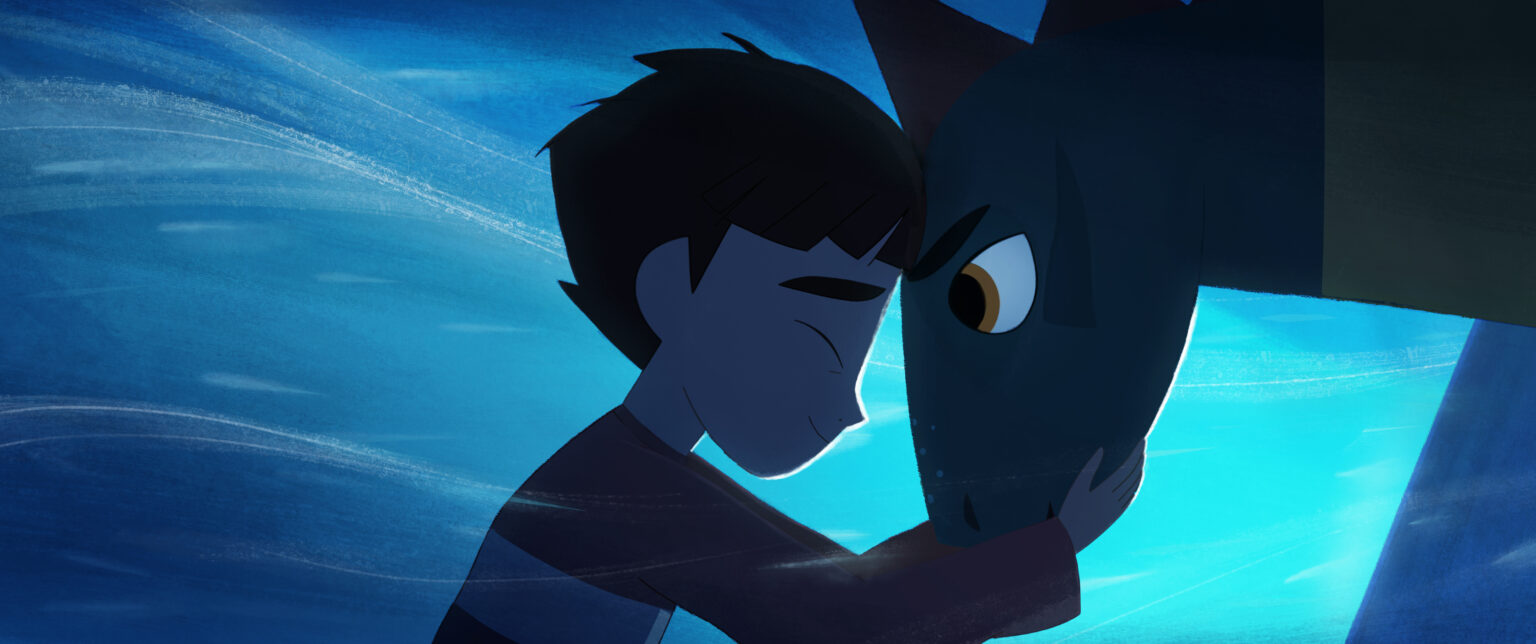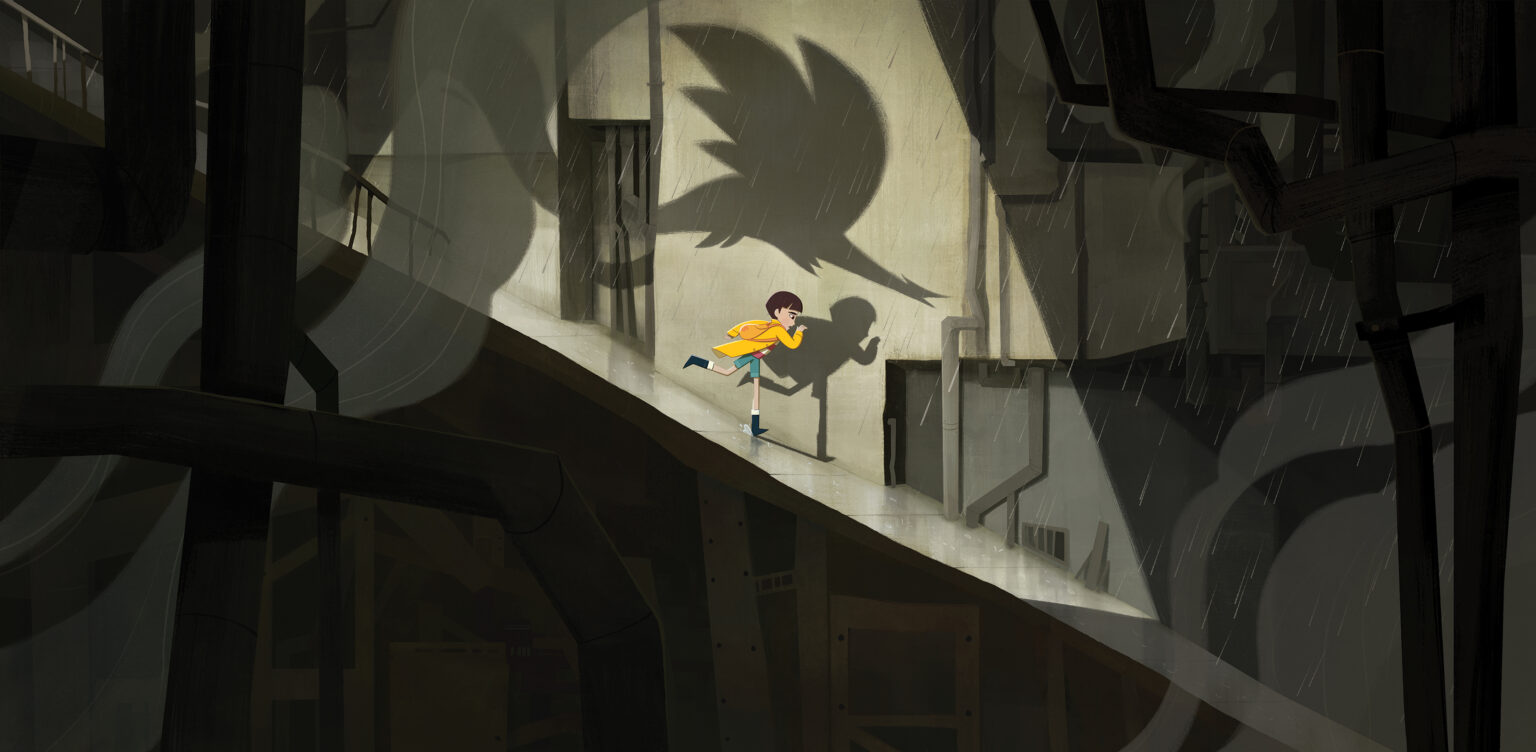Cartoon Saloon’s “My Father’s Dragon” (streaming on Netflix November 11), the whimsical 2D adaptation of Ruth Stiles Gannett’s classic children’s book, got some Oscar heat this week by winning the Special Jury prize at the Animation Is Film Festival. It’s quite a contrast to Irish director Nora Twomey’s Oscar-nominated directorial debut, “The Breadwinner,” based on Deborah Ellis’ popular YA novel about Afghan oppression.
But the mere suggestion that “My Father’s Dragon” is kid-friendlier registers a protest from the director. The tone might be gentler, but the themes of parenting and puberty are very complex, she insists.
“My Father’s Dragon” explores the rite of passage experienced by the restless Elmer (Jacob Tremblay), who runs away from his hard-working mother (Golshifteh Farahani) and their bleak existence in the noirish city of Nevergreen to the colorful but endangered Wild Island, where he bonds with a dragon named Boris (Gaten Matarazzo) who’s in need of confidence building.
The prospect of adapting “My Father’s Dragon” was first presented to Cartoon Saloon a decade ago, when producer Julie Lynn approached the Ireland-based studio with the project. “When I first read the book in 2012, there was one page that stood out where Elmer gives several saucers of milk to a stray cat and his mom gets really angry with him,” Twomey told IndieWire. “It made me immediately aware of all the layers of storytelling because I couldn’t help thinking what was going on in the mom’s life that she would make such a big deal of this. And what was going on in his life when he looks up into his mom’s face and sees a moment of anger with lack of control and fear. I could relate to not knowing what happens next in your life as a mom.”

“My Father’s Dragon”
Courtesy of Netflix
Twomey was instantly hooked and collaborated with Lynn (“Raymond & Ray”) and screenwriter Meg LeFauve (“Inside Out”) on expanding the story. Early on, the director met with Stiles Gannett to discover more about her inspiration. “She said she wrote it for herself because she connected with her inner child,” Twomey said. “She talked about the importance of children’s autonomy, and that was the spirit that I wanted to capture. Life is no longer simple for Elmer and his mother no longer has all the answers for him. It’s about puberty, and that was brought through with the voice performances of Gaten, who was 17, and Jacob, who was 12. Their voices were uncontrolled, which displayed a wonderful vulnerability that’s at the heart of the film. Gaten’s voice would shoot up an octave and he would apologize and I made sure we had that recorded.”
Brothers Mychael and Jeff Danna scored the movie based on the extreme highs and lows of the human voice. “It supports the same idea about the range of experience that the two children go through,” Twomey said. “Elmer and Boris are two children trying to navigate the changes that they’re going through.”

“My Father’s Dragon”
Courtesy of Netflix
As far as the character designs, they were inspired by the hand-drawn black-and-white illustrations of Ruth Stiles Gannett’s stepmother, Ruth Chrisman Gannett, as well as drawings by Cartoon Saloon employee’s children — including Twomey’s two sons. “We asked them to draw the characters to see what they would do,” she added. “It helped the imaginations. They would draw a tiger’s head much bigger than it actually is because it’s the most dangerous thing with its bite. They would draw a tangle of crocodiles.”
Wild Island contained no limits. Instead of brown and green, the color palette was mauve and gold, much warmer than the gray and eternally wet Nevergreen. Cartoon Saloon ran with it and created a great sense of scale and immersion, but also imbalance because the island is slowly sinking. That’s why it’s intentionally chaotic. “If Elmer loses balance or is being chased, the audience would get that same visceral sense when we introduce effects like drizzle, water, rain, and lightning,” said Twomey. “Elmer is a small boy in a big world that he has no control over. But he takes the lead because Boris doesn’t want to.”
Boris, meanwhile, is no ordinary dragon. He’s blue with yellow stripes and soft-looking, which complements his feeling of inadequacy. “The colors we had to take careful control over on Wild Island,” the director said. “In order to focus on the characters’ performances, which was key for the animators, we had to often reflect the light around Boris in a way that he took on the colors of whatever area he was walking through. Otherwise, the blue and yellow would’ve been extremely overwhelming. But he’s designed in a way that makes him feel awkward. Everything that Boris does suggests not to take him seriously and don’t ask him what to do. He doesn’t feel capable. And Elmer almost crushes in on top of himself with his physicality because he’s taking on much more than a child should.”

“My Father’s Dragon”
Courtesy of Netflix
This was a pivot away from the more finely textured, illustrated quality of Cartoon Saloon’s previous films, each of which was nominated for a Best Animated Feature Oscar. “My Father’s Dragon” contains a more refined, classical aesthetic. While the studio continued its use of TVPaint to get the brush and pencil strokes, for the first time it used Toon Boom for effects and digital ink-and-paint, which made for a fluid workflow during the pandemic. The studio was also introduced to Moho for extra rigging to lift the island or to handle lots of line work associated with crowd characters.
The film also hones in on performance more closely than previous Cartoon Saloon efforts. “I remember telling the animators how to read the faces because there’s a difference between what they’re saying and what they’re doing,” Twomey said. “They’re often trying to protect somebody from something else. Subtlety was important. This is about change that happens in children’s lives and what happens to them when safety’s gone. We all have deep wounds. Stories that can explore that in ways that don’t exclude anyone is something I’m proud of.”


